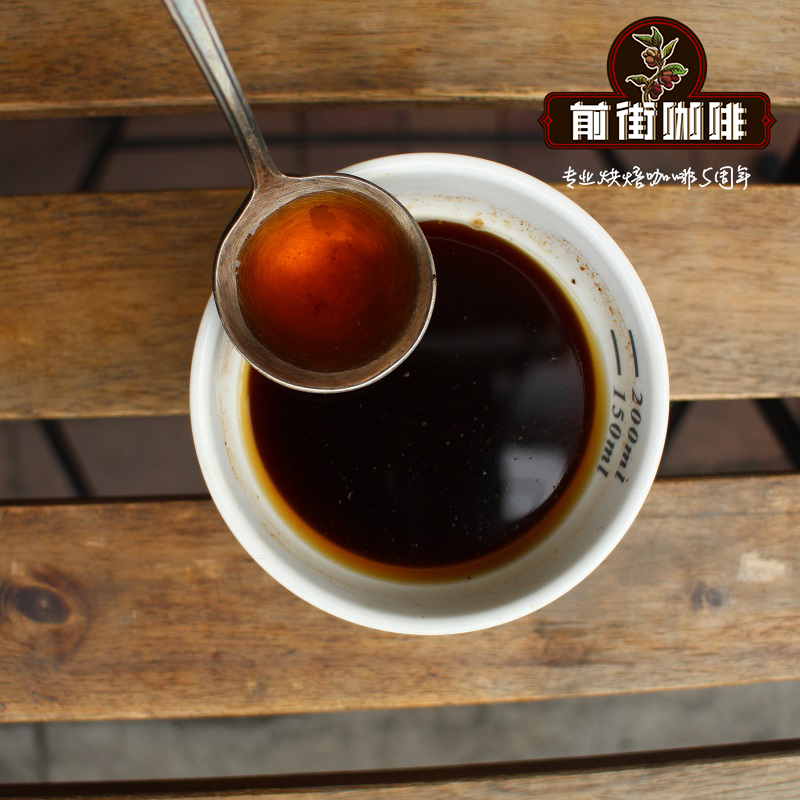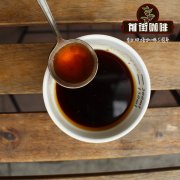An introduction to the flavor of Tanzanian coffee

Professional coffee knowledge exchange More coffee bean information Please pay attention to coffee workshop (Weixin Official Accounts cafe_style)
(Kilimanjaro) The coffee-producing Ruyama region in southern Tanzania is named after the administrative district in which it is located, after the Ruvuma River, the region's main river. The coffee-producing town of Mbinga sits in a remote corner of Tanzania. Mbinga and its surrounding areas are mainly dependent on the coffee trade. Coffee is grown on volcanic soils and should have excellent quality, but in the early years, coffee farmers often harvested too early to repay loans. The manual peeling machines, washing equipment and water used for their own treatment are not clean. The drying process is also more than above ground. The quality of harvesting and post-processing is disappointing. Two attempts have been made locally to introduce pulpers/Pulperies to improve the process. From 1963 to 1964, the cooperative built a batch of pulpers and operated them for several years. The initial results were good, but gradually the equipment fell into disrepair and the quality of output could no longer make farmers earn enough income.
In the late 1980s and early 1990s, some of the facilities were rebuilt with European aid, but the chaos prevented them from continuing to operate. In 1997, two private companies decided to upgrade Mbinga's coffee quality by investing resources in repairing and managing the processing equipment in the village and building 13 new central pulpers and 8 micropulpers. To ensure proper post-harvest processing, they built a central processing plant in Mbinga, which can be processed in the factory even if the weather conditions are bad, and through a more detailed classification operation, AAA (19 mesh) coffee beans are first identified as commercial in Tanzania.
The farmer collects the harvested coffee cherries here and first spreads them flat on an inspection table to ensure that no immature or overripe berries are mixed in. Only after selection can the coffee cherries be weighed and used to calculate the purchase gold for the coffee farmer. The weighed coffee cherries are poured into a large water tank, the light and floating coffee cherries are picked up and graded to G2 for additional treatment, and the cherries with normal weight sink into the bottom of the tank. The damaged fruits are selected along the channel, and then they reach the fermentation tank through the peel removal machine for 2 to 3 days of washing and fermentation. After washing the contaminated pulp from the washing channel, the shelled beans are concentrated on a drying platform for drying and the damaged beans are removed until the moisture content of the shelled beans is reduced to an appropriate ratio, and then sent to a storage environment with suitable air conditioning conditions until shelling.
In order to get farmers to give up processing at home in poor processing conditions, the processing plant is willing to pay the same or even more price to buy coffee cherries. On the one hand, farmers can get income earlier, and on the other hand, they do not have to carry out post-harvest processing at home. Farmers can focus more on caring for their coffee and harvesting, so as to improve the quality of coffee purchased.
Flavor: Orange pomelo with fruit acid soft apricot/dates round sweet with spice malt chocolate
Suggested parameters: filter cup V60, grinding degree small Fuji 3.5 scale, water temperature 90°, powder-water ratio 1:15,15 g powder brewing 225 g water, total brewing time 2 minutes
Important Notice :
前街咖啡 FrontStreet Coffee has moved to new addredd:
FrontStreet Coffee Address: 315,Donghua East Road,GuangZhou
Tel:020 38364473
- Prev

The Story of Tanzania Coffee Bean producing area the cooking and flavor characteristics of Tanzanian coffee bean
Professional coffee knowledge exchange more coffee bean information please follow the coffee workshop (Wechat official account cafe_style) Tanzania is a typical East African country, facing Kenya and Uganda to the north, Malawi, Mozambique and Zambia to the south and Rwanda and Burundi to the west. When it comes to Tanzanian coffee, we must mention the coffee produced in Mount Kilimanjaro. She's in Tansan.
- Next

Kighoma, Tanzania introduces the flavor characteristics of Tanzanian coffee. Suggestions on Tanzanian hand-flushing parameters.
Professional coffee knowledge exchange more coffee bean information please follow the coffee workshop (Wechat official account cafe_style) Coffee is the largest crop in East Africa in Tanzania, mainly using natural washing method to treat coffee beans, Tanzania's washed coffee style is reminiscent of Kenyan coffee beans, but the overall acid is not as strong as Kenyan beans, the taste is more gentle and sweet
Related
- Detailed explanation of Jadeite planting Land in Panamanian Jadeite Manor introduction to the grading system of Jadeite competitive bidding, Red bid, Green bid and Rose Summer
- Story of Coffee planting in Brenka region of Costa Rica Stonehenge Manor anaerobic heavy honey treatment of flavor mouth
- What's on the barrel of Blue Mountain Coffee beans?
- Can American coffee also pull flowers? How to use hot American style to pull out a good-looking pattern?
- Can you make a cold extract with coffee beans? What is the right proportion for cold-extracted coffee formula?
- Indonesian PWN Gold Mandrine Coffee Origin Features Flavor How to Chong? Mandolin coffee is American.
- A brief introduction to the flavor characteristics of Brazilian yellow bourbon coffee beans
- What is the effect of different water quality on the flavor of cold-extracted coffee? What kind of water is best for brewing coffee?
- Why do you think of Rose Summer whenever you mention Panamanian coffee?
- Introduction to the characteristics of authentic blue mountain coffee bean producing areas? What is the CIB Coffee Authority in Jamaica?

